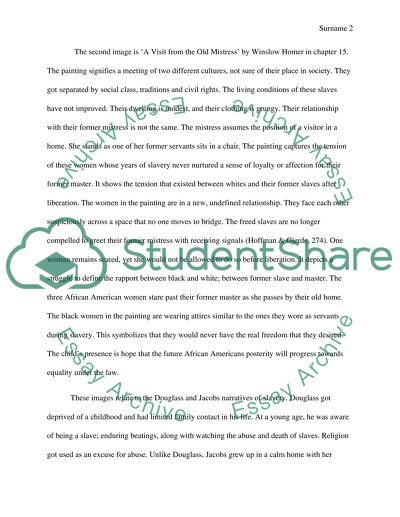Slavery Narratives and Image Symbolism Essay Example | Topics and Well Written Essays - 750 words. Retrieved from https://studentshare.org/history/1450522-compare-or-constrat-two-images
Slavery Narratives and Image Symbolism Essay Example | Topics and Well Written Essays - 750 Words. https://studentshare.org/history/1450522-compare-or-constrat-two-images.


